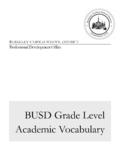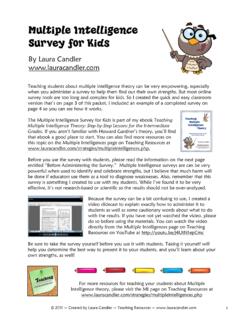Transcription of Classroom Assessment in the K to 12 Basic Education Program
1 Classroom Assessment in the K to 12 Basic Education Program 1 2 DepEd Order No. 8 s. 2015 Policy Guidelines on Classroom Assessment for the K to 12 Basic Education Program Zone of Proximal Development (Vygotsky, 1978) Assessment is committed to learners success to move from guided to independent display of knowledge, understanding, and skills learners to transfer knowledge, understanding and skills successfully in future situations facilitates the development of learners higher order thinking and 21st-century skills. 3 Theoretical Basis DEPARTMENT OF Education Assessment in the K to 12 Basic Education Program recognizes: of learners inside the Classroom need for multiple ways of measuring their varying abilities and learning potentials role of learners as co-participants in the Assessment process 4 Assessment in the K to 12 Basic Education Program DEPARTMENT OF Education 1 2 3 A B C is a joint process that involves both teachers and learners.
2 Should be in unity with instruction. 5 What is Classroom Assessment ? DEPARTMENT OF Education Instruction Assessment is used to track learner progress in relation to learning standards and development of 21st-century skills. provides bases for the profiling of student performance on the learning competencies and standards of the curriculum. promotes self-reflection and personal accountability among students about their own learning. 6 What is Classroom Assessment ? DEPARTMENT OF Education A B C Learning Standards Development of 21st-century skills Assessment is a process of identifying, gathering, organizing and interpreting quantitative and qualitative information about what learners know and can do.
3 Assessment methods should be consistent with curriculum standards. measures achievement of competencies by the learners. 7 What is Classroom Assessment ? quantitative information qualitative information Classroom Assessment methods curriculum standards achieved competencies 8 What is assessed in the Classroom ? DEPARTMENT OF Education Content Standards cover a specified scope of sequential topics within each learning strand, domain, theme or component. answer the question What should learners know? Performance Standards describe the abilities and skills that learners are expected to demonstrate in relation to the content standards and integration of 21st-century skills.
4 Answer the following questions: can learners do with what they know? well must learners do their work? well do learners use their learning or understanding in different situations? do learners apply their learning or understanding in real-life contexts? tools and measures should the learners use to demonstrate what they know? Learning Competencies Learning competencies refer to the knowledge, understanding, skills and attitudes that learners need to demonstrate in every lesson and/or learning activity. To align the Assessment process with the K to 12 curriculum, the adapted Cognitive Process Dimensions may be used as a guide in the formulation of Assessment tasks and activities.
5 9 What is assessed in the Classroom ? DEPARTMENT OF Education Remembering The learner can recall information and retrieve relevant knowledge from long-term memory: identify, retrieve, recognize, duplicate, list, memorize, repeat, reproduce Understanding The learner can construct meaning from oral, written and graphic messages: interpret, exemplify, classify, summarize, infer, compare, explain, paraphrase, discuss Applying The learner can use information to undertake a procedure in familiar situations or in a new way: execute, implement, demonstrate, dramatize, interpret, solve, use, illustrate, convert, discover Analyzing The learner can distinguish between parts and determine how they relate to one another, and to the overall structure and purpose: differentiate, distinguish, compare, contrast, organize, outline, attribute, deconstruct Evaluating The learner can make judgments and justify decisions: coordinate, measure, detect, defend, judge, argue, debate, critique, appraise, evaluate Creating The learner can put elements together to form a functional whole, create a new product or point of view.
6 Generate, hypothesize, plan, design, develop, produce, construct, formulate, assemble, design, devise What is the connection between and among Curriculum Standards, Cognitive Process Dimensions and KPUP? DEPARTMENT OF Education Curriculum Standards Cognitive Process Dimensions Levels of Assessment (DO 73, s. 2012) Content Standards What should the learners know? Performance Standard What can learners do with what they know? Applying The learner can execute, implement, demonstrate, dramatize, interpret, solve, use, illustrate, convert, discover Analyzing Evaluating Creating Remembering The learner can identify, retrieve, recognize, duplicate, list, memorize, repeat, reproduce Understanding Knowledge 1.
7 What should students know? 2. How are they to express or provide evidence of what they know? What is the connection between and among Curriculum Standards, Cognitive Process Dimensions and KPUP? DEPARTMENT OF Education Curriculum Standards Cognitive Process Dimensions Levels of Assessment (DO 73, s. 2012) Content Standards What should the learners know? Performance Standard 1. How well do learners use their learning or understanding in different situations? 2. How do learners apply their learning or understanding in real-life contexts? Applying The learner can execute, implement, demonstrate, dramatize, interpret, solve, use, illustrate, convert, discover Analyzing The learner can differentiate, distinguish, compare, contrast, organize, outline Evaluating Creating Remembering Understanding The learner can interpret, classify, summarize, infer, compare, explain, paraphrase Process 1.
8 What can students do with the information or facts they have in relation to familiar situations? 2. What are the evidence of what they can do with the information and facts they have? What is the connection between and among Curriculum Standards, Cognitive Process Dimensions and KPUP? DEPARTMENT OF Education Curriculum Standards Cognitive Process Dimensions Levels of Assessment (DO 73, s. 2012) Content Standards What should the learners know? Performance Standard 1. What can learners do with what they know? 2. How well must learners do their work? 3. How well do learners use their learning or understanding in different situations?
9 Applying The learner can demonstrate, dramatize, interpret, illustrate, convert, discover Analyzing The learner can differentiate, distinguish, compare, contrast, organize, outline, attribute Evaluating The learner can coordinate, measure, detect, judge, argue, debate, critique, evaluate Creating Remembering Understanding The learner can interpret, exemplify, infer summarize, compare, explain, paraphrase Understanding 1. What breadth (connection to a wider context) and depth (insights and reflection) of understanding do the students have regarding the information and facts that they know? 2.
10 What are the evidence of the breadth and depth understanding that the students have reached? What is the connection between and among Curriculum Standards, Cognitive Process Dimensions and KPUP? DEPARTMENT OF Education Curriculum Standards Cognitive Process Dimensions Levels of Assessment (DO 73, s. 2012) Content Standards What should the learners know? Performance Standard 1. How well do learners use their learning or understanding in different situations? 2. How do learners apply their learning or understanding in real-life contexts? 3. What tools and measures should learners use to demonstrate what they know?
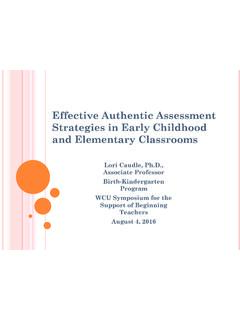

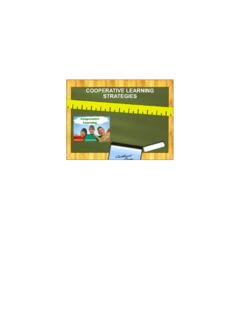
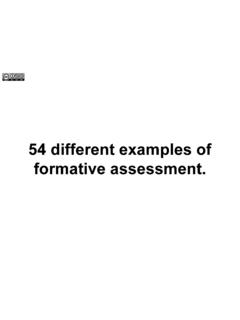
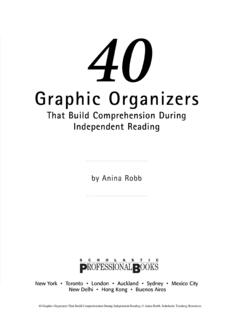
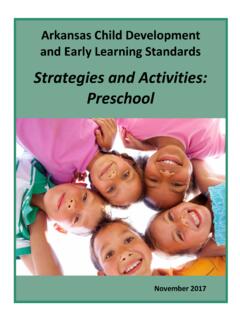
![[PDF] Differentiated Instruction PPT](/cache/preview/a/c/8/4/8/c/0/6/thumb-ac848c0658649db8874b31455869b542.jpg)
